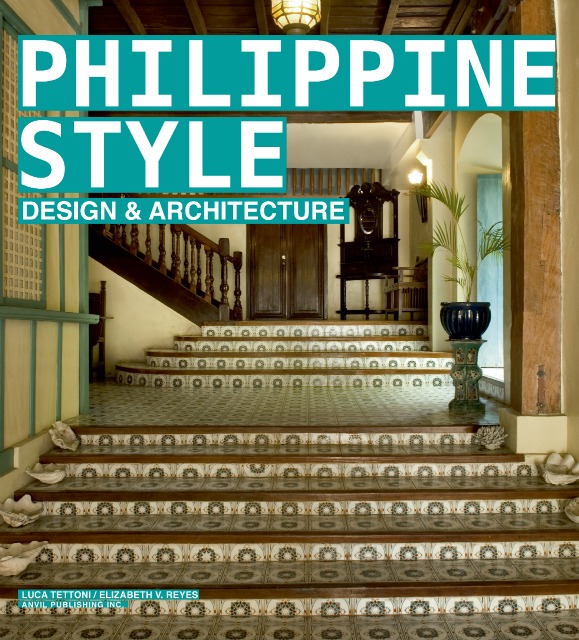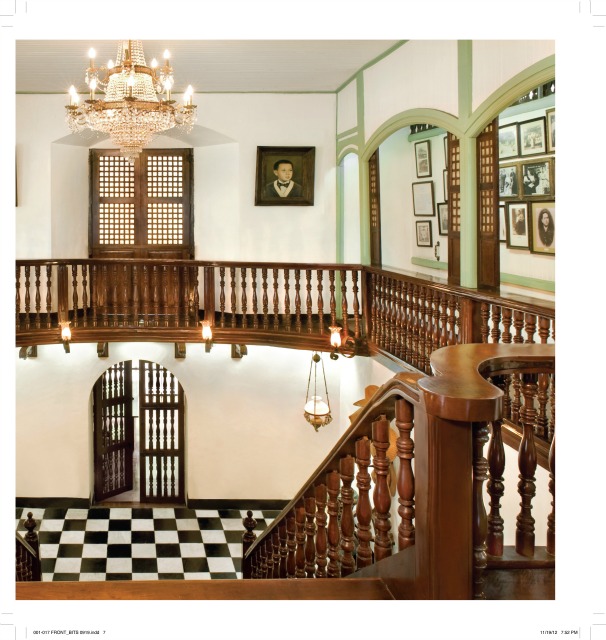Filtered By: Cbb
Community Bulletin Board
'Philippine Style: Design and Architecture' book now out
Anvil Publishing Inc. releases "Philippine Style: Design and Architecture," a new book that delves into the roots of traditional Filipino buildings and describes the varied influences that have resulted in the ever-inventive Philippine Style. Written by Luca Tettoni and Elizabeth V. Reyes, the book features houses, interiors, and furniture; and also, explores main themes: ancestral houses, interiors and furniture that date from the period of Spanish colonization; and modern-day homes and designs that retained traditional designs. 

For the first time, the unique architectural history of the Philippines is explored in full color and full detail: from the native nipa hut called the bahay kubo, through the Spanish colonial period of the bahay na bato or “house of stone,” to modern-day homes that take influences, motifs, and materials from these earlier prototypes.
Architect Dominic Galicia writes in the introduction, “This book aims to highlight the continuum of the Filipino design process: how, through history, the varied peoples of the archipelago have always strived to consult with Kahn’s Nature – and how a type of unique Filipino identity has thereby emerged.”
The traditional houses, in this book, shared the same responses to climatic conditions and shared expressions of cultural realities. Some of the traditional houses featured in the book are Villa Angela in Vigan, Pastor house in Batangas, and Casa Villavicencio in Taal Batangas.  Villa Angela, built in 1859 by Vigan’s gobernadorcillo Agapito Florendo y Bonifacio, boasts of its grand sala an elegant room with wood-and-cane furniture, Victorian wrought-iron hanging lamps. The Acosta-Pastor ancestral home, built in 1883 by gobernadorcillo Alejo Acosta, features a furnished traditional style wood-and-cane sala sets. Casa Villavicencio, meanwhile, contains an informal antesala at the top of its stairs; this is where the homeowner entertained tradesmen or casual visitors. The heavy molave trunk by the stairs holds up the main floor of the 1840s bahay na bato.
Villa Angela, built in 1859 by Vigan’s gobernadorcillo Agapito Florendo y Bonifacio, boasts of its grand sala an elegant room with wood-and-cane furniture, Victorian wrought-iron hanging lamps. The Acosta-Pastor ancestral home, built in 1883 by gobernadorcillo Alejo Acosta, features a furnished traditional style wood-and-cane sala sets. Casa Villavicencio, meanwhile, contains an informal antesala at the top of its stairs; this is where the homeowner entertained tradesmen or casual visitors. The heavy molave trunk by the stairs holds up the main floor of the 1840s bahay na bato.

The Ledesma House in Iloilo as featured in 'Philippine Style: Design & Architecture.
Contemporary houses explored in "The Philippine Style" show past architectural styles and modern influences from foreign countries. An example of a contemporary abode is the Filipinana Farmhouse of Elizalde, with “a ceramic tub, cradled in a rustic rattan basket, with Victorian-style taps.” Another example is the Riverine Hideaway by Cesar Gaupo of Shanghai Tang. In Gaupo’s primitive modern home, is a cement feature wall and matching raised table to add modernity.
Luca and Reyes wrote the architectural book "The Filipino Style" (1997), which was published by Periplus. Their new book "The Philippine Style: Design & Architecture" contains more information on Philippine Architecture. The book has detailed sections on antique furniture and organic materials, as well as chapters on the work of modern-day designers and architects. It also features assessments of homes, home interiors, the ever-versatile Filipinos continue to innovate, and create, both at home and abroad. This book is only available in National Book Store, Powerbooks, and Bestellers.
Press release from Anvil Publishing, Inc.
More Videos
Most Popular




